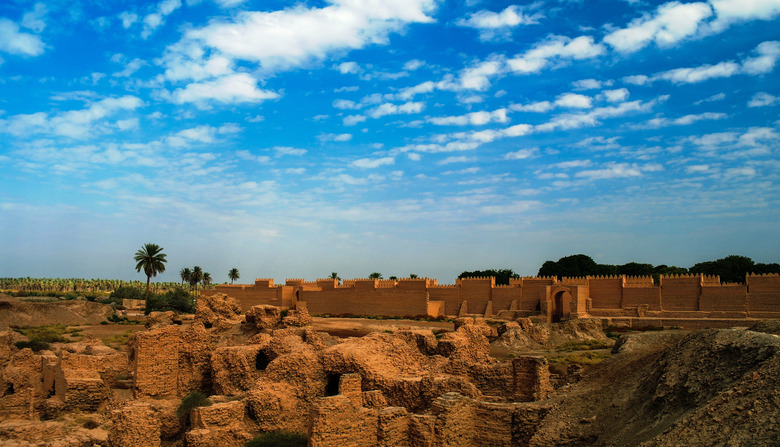Mesopotamia is a region of Southwest Asia that corresponds to modern-day Iraq, Syria, western Iran and southeast Turkey. Thousands of years ago Mesopotamia’s weather was semi-arid, with hot summers and sporadic rain. However, the presence of two rivers, the Tigris and the Euphrates, made it humid, fertile and ideal for nomads to start settlements. The abundance of water and nutrient-rich soil made it an ideal place to develop agriculture. More tribes made the region home and gave birth to one of the world’s first settlements. Mesopotamia, which in Greek means “the land between the rivers,” eventually became the cradle of world civilization.
TL;DR (Too Long; Didn’t Read)
Ancient Mesopotamia and the “Fertile Crescent” experienced enough rainfall, and had more than adequate supplies of water from the Tigris and Euphrates Rivers, to make the region suitable for agriculture and permanent human settlement.
How Did a Desert Become so Fertile?
The Tigris and the Euphrates follow roughly parallel courses as they flow from the highlands of eastern Turkey through Syria and Iraq and into the Persian Gulf. The rivers flooded the area every spring when snow from nearby mountains melted and made its way into their currents. The floods, although destructive, also enriched the sandy soil with vital nutrients, which made agriculture feasible. Little by little the cities that were adjacent to the rivers managed to produce enough food to trade with other settlements.
Human creativity is also responsible for ancient Mesopotamia’s development. When the first cities were formed, their dwellers discovered that they could have access to water year-round if they built an irrigation system. To tame the rivers, early Mesopotamians built canals and reservoir basins. By 3500 BCE, Mesopotamia’s residents had adapted to the then semi-arid region and had learned how to produce sustainable crops.
Why Did Mesopotamia Collapse?
For years scientists have been trying to explain why Mesopotamian culture vanished. The first hypothesis suggests that Mesopotamia’s collapse was the result of environmental changes. Irrigation systems can leave behind traces of mineral salts that may have reached very high levels and rendered the soil poisonous for some edible plants. Other theories concentrate on armed conflicts such as invasions.
Is the Area Still a Semi-Arid Region?
Ancient Mesopotamia used to have about 10 inches of rain per year and very hot temperatures – in summer average temperatures reached 110 degrees Fahrenheit. Modern-day Iraq and Syria have an arid climate. They have hot, dry summers and short cool winters.

